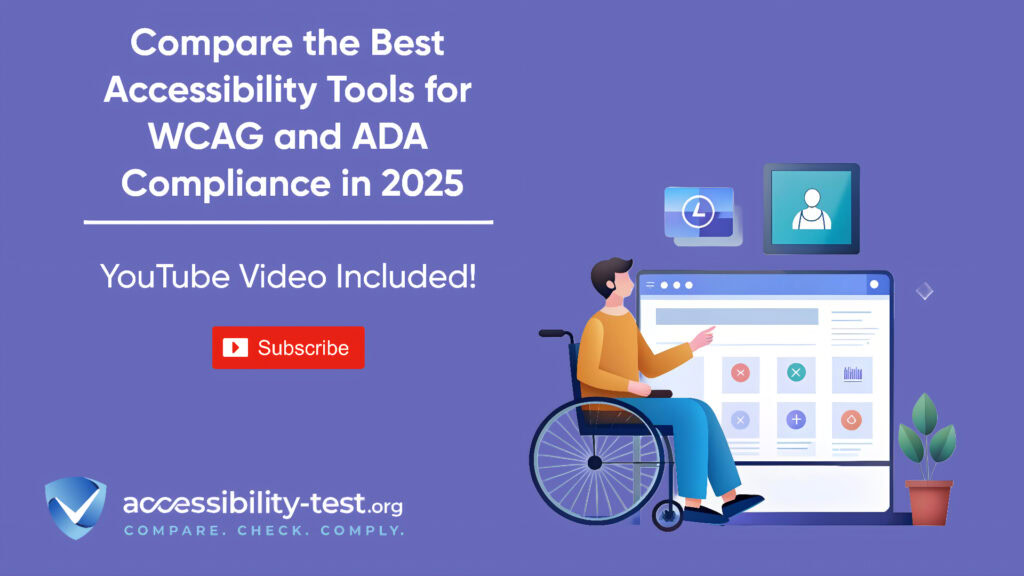What Is Digital Accessibility?
Digital accessibility refers to the practice of ensuring that all users, including those with disabilities, have equal access to information and functionality on websites and digital platforms. This concept has gained significant importance as more individuals rely on the internet for daily activities, such as shopping, information gathering, and socializing. As a result, organizations are increasingly recognizing the necessity to create inclusive online environments that accommodate diverse user needs.
The legal landscape surrounding digital accessibility is shaped by several standards and regulations. Among the most notable are the Web Content Accessibility Guidelines (WCAG) 2.2, the Americans with Disabilities Act (ADA), and Section 508 of the Rehabilitation Act. These frameworks provide guidelines aimed at making web content more accessible to individuals with a range of disabilities, including visual, auditory, physical, and cognitive impairments. Compliance with these standards is not only a legal obligation for many organizations but also an ethical responsibility to promote inclusivity.
Choosing the right accessibility tool for a website is vital in ensuring adherence to these standards. An effective accessibility tool can help identify and remedy potential barriers that may hinder user experience for individuals with disabilities. Such tools often include features like keyboard navigation support, screen reader compatibility, and options for customizing text size and contrast. By integrating these features into the website’s design and functionality, businesses can enhance usability and improve overall user satisfaction.
In the contemporary digital landscape, neglecting digital accessibility can lead to reputational damage, legal repercussions, and loss of potential customers. Therefore, it is crucial for organizations to prioritize the adoption of appropriate accessibility tools as an integral part of their web development strategy. By doing so, they not only comply with regulations but also exemplify a commitment to fostering an inclusive and accessible online community for all users.
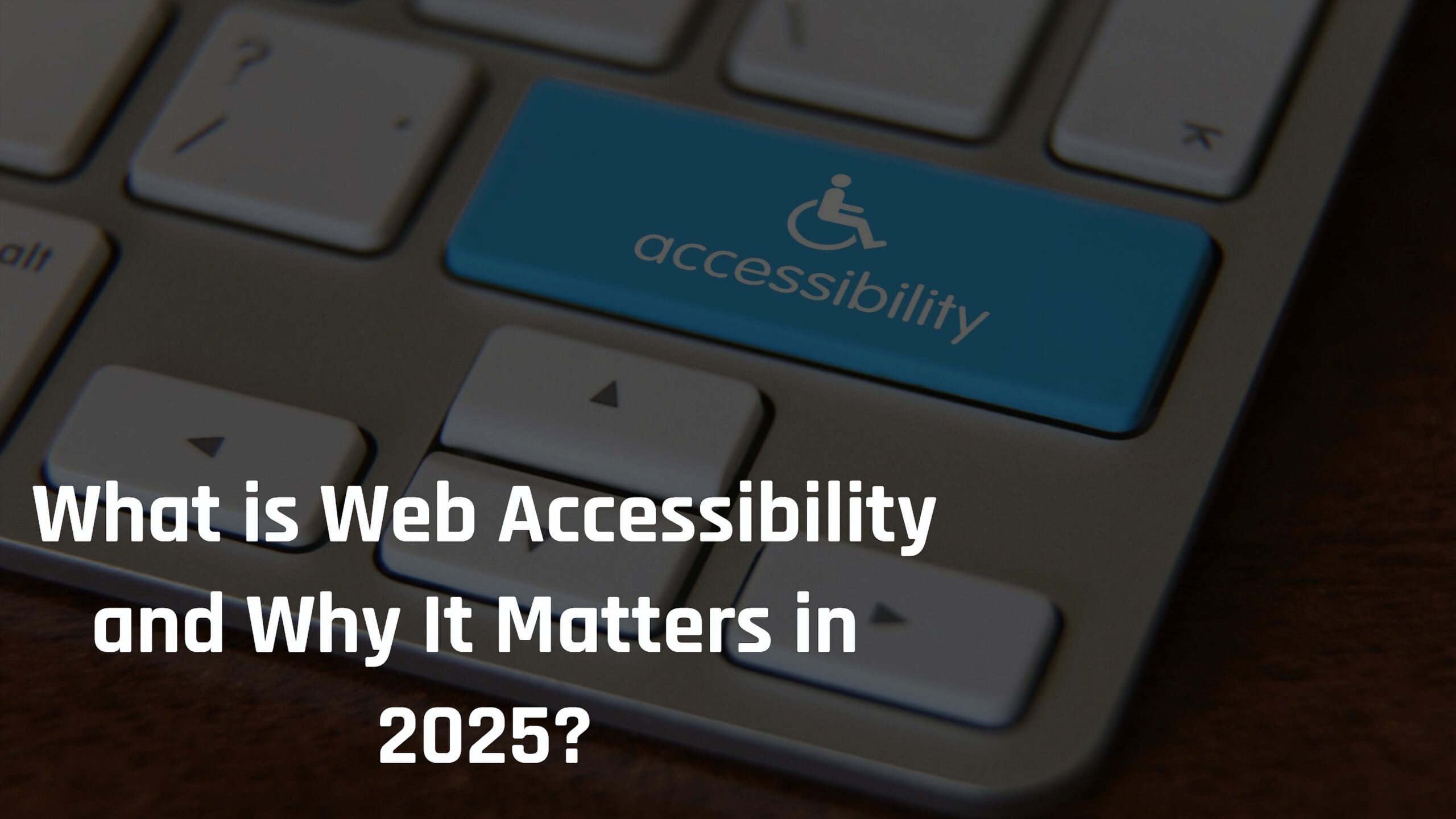
Key Considerations When Choosing an Accessibility Tool
When selecting an accessibility tool for your website, it is crucial to evaluate various factors that will influence your decision-making process. The chosen tool must align with your specific needs while ensuring compliance with accessibility standards, such as the Web Content Accessibility Guidelines (WCAG).
First and foremost, consider the features and functionalities of the accessibility tool. Identifying the essential features your website requires is vital for enhancing accessibility. This may include screen reader compatibility, keyboard navigation support, alternative text suggestions for images, or color contrast analyzers. Assess whether the tool provides customizable options, allowing you to tailor it to meet the specific requirements of your audience. Features such as real-time monitoring and reporting can also be invaluable for ongoing compliance assurance.
Budget considerations play an equally important role in your selection process. Accessibility tools come in varying price ranges, from free options to premium services. It is essential to evaluate the cost-effectiveness of the tool in relation to the features it offers. Consider long-term investment versus upfront costs. Some tools may have low initial expenses but could incur additional fees for premium features, updates, or support. Allocating a fair budget will ensure that the selected tool will consistently support your website’s accessibility objectives.
Ease of use is another critical factor. The best accessibility tools provide user-friendly interfaces that allow both technical and non-technical users to navigate efficiently. A steep learning curve can discourage team members from utilizing the tool fully, which is counterproductive to your accessibility goals. Additionally, examine the customer support options available. Good technical support helps businesses address any issues promptly while providing guidance in maximizing the tool’s effectiveness.
Finally, consider the specific use cases for your business. Different industries may have unique accessibility needs. A tool that works well for an e-commerce site may not be suitable for a non-profit organization. Tailoring your choice to your industry ensures that the selected tool will effectively address your audience’s diverse requirements.
Features and Functionality
Selecting the right accessibility tool for your website requires a comprehensive understanding of the various features and functionalities that these tools offer. Popular platforms like UserWay, AccessiBe, EqualWeb, and AudioEye each provide a unique set of capabilities aimed at helping organizations enhance website accessibility compliance.
UserWay, for instance, is recognized for its extensive customization options, allowing users to tailor the interface to meet specific accessibility requirements. This platform offers features like automated alt text generation and keyboard navigation enhancements, ensuring that users with disabilities can navigate websites effortlessly. Additionally, UserWay’s real-time monitoring tools are beneficial for organizations that require ongoing compliance checks.
AccessiBe, another notable tool, employs artificial intelligence to deliver automated fixes to accessibility issues. This tool focuses on providing a simple implementation process, making it appealing for organizations seeking quick solutions. AccessiBe offers features such as screen reader compatibility enhancements and user interface adjustments, which are pivotal for ensuring an inclusive user experience.
EqualWeb stands out with its commitment to ongoing support and professional assistance in complying with accessibility standards. Its features encompass an array of functionalities, including a customizable accessibility widget and a reporting dashboard that monitors compliance progress. This provides organizations with a thorough understanding of their accessibility status over time, enabling better strategic planning.
Lastly, AudioEye includes features that cater specifically to individuals with auditory disabilities, such as audio descriptions and options to increase text visibility. The value of AudioEye lies in its focus on creating a fully accessible digital environment through ongoing auditing and manual remediation support.
Ultimately, assessing your organization’s specific needs for automated fixes, manual adjustments, or continuous monitoring is critical. Each platform has distinct offerings, making it essential to choose an accessibility tool that aligns with both your objectives and the needs of your users.
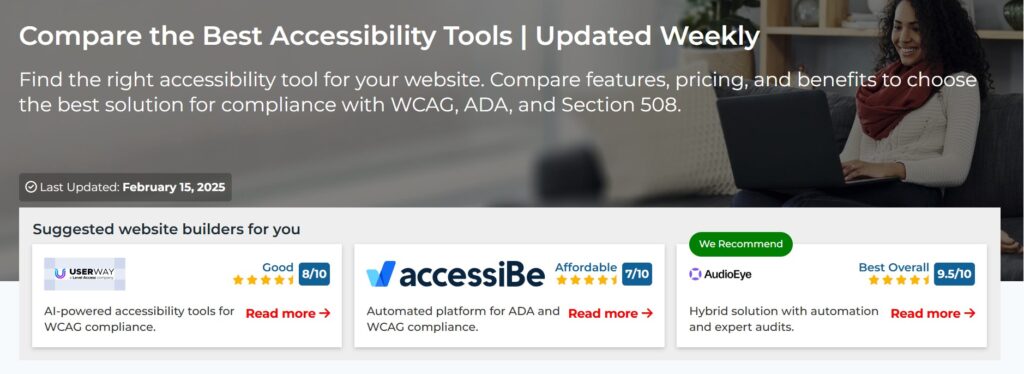
Budget | Free VS Paid Tools
When assessing accessibility tools for your website, one of the most critical factors is the budget allocated for these resources. Accessibility tools are available in both free and paid versions, each offering distinct advantages and shortcomings that can impact your website’s compliance and user experience. Free tools such as Wave or Axe are excellent starting points for many businesses, allowing initial assessments of website accessibility. These tools can identify some common issues quickly, making them useful for basic evaluations of your site’s adherence to accessibility guidelines.
However, free accessibility tools often come with limitations. They generally do not provide comprehensive analysis, detailed reporting, or extensive feature sets that are essential for larger websites or businesses with more complex needs. While they serve as a valuable first step, relying solely on free tools may leave significant accessibility gaps unaddressed. Consequently, businesses may encounter legal risks or fail to meet the accessibility demands of diverse user populations.
In contrast, paid accessibility tools provide a more robust solution, offering advanced features such as automated testing, in-depth reporting, continuous monitoring, and dedicated support. These features ensure that all aspects of website compliance are thoroughly examined, allowing businesses to proactively address issues that might arise. Investing in a high-quality accessibility tool not only enhances the user experience for individuals with disabilities but can also demonstrate a commitment to inclusivity and legal compliance.
Ultimately, when considering budget, it is essential to weigh the initial savings of free tools against the long-term benefits of investing in a comprehensive, paid solution. For businesses aiming to establish a sustainable accessibility strategy, the investment in a paid tool can be justified by the profound impact on compliance, user satisfaction, and the overall success of digital operations.
Ease of Use for Non-Technical Users
When it comes to choosing the best accessibility tool for a website, ease of use is a critical factor, particularly for non-technical users. Many website owners and managers may not possess advanced technical skills, making it important for them to select a tool that simplifies installation and day-to-day management. UserWay, for instance, is widely regarded for its user-friendly interface, allowing individuals to easily implement the software without requiring extensive coding knowledge. This tool offers straightforward installation procedures and customizable options that can be tailored to fit the specific needs of various websites.
On the other hand, tools such as AudioEye provide a more feature-rich experience but may come with a steeper learning curve. While AudioEye’s dashboard offers advanced functionalities and comprehensive reporting features, it can be overwhelming for users who are not well-versed in technical settings. This complexity could hinder effective usage, especially for teams comprised primarily of individuals without an IT background. Therefore, evaluating the level of technical expertise within a team is vital when considering an accessibility solution.
Furthermore, the level of customer support provided by these tools can significantly impact their ease of use. A tool that offers extensive training materials, tutorials, and responsive customer service can enhance accessibility for non-technical users. It’s important for website managers to look for tools that not only provide the necessary functionalities but also emphasize user assistance, ensuring that help is readily available when needed. Ultimately, selecting an accessibility tool that aligns with the technical abilities of the users will facilitate smoother implementation and ongoing maintenance, fostering an inclusive online environment.
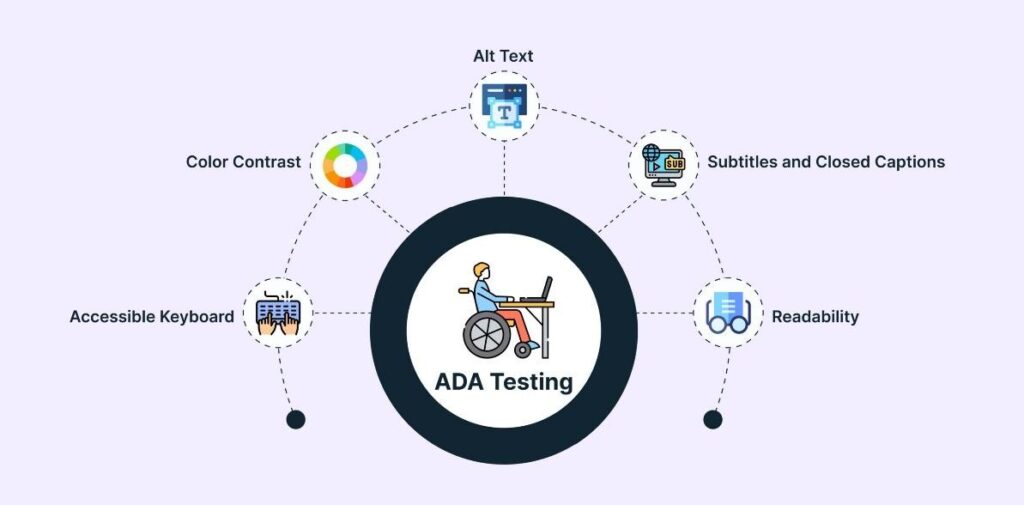
Specific Use Cases of Accessibility Tools
In today’s digital landscape, ensuring that websites are accessible to all users is paramount. Various industries are prioritizing accessibility to cater to their diverse clientele, particularly eCommerce websites where consumer experience can directly impact sales. Implementing tailored accessibility solutions can significantly enhance the usability of these platforms.
For instance, eCommerce websites often attract a wide variety of users, including those with disabilities. Accessibility tools like EqualWeb and AccessiBe are designed to bridge the gap between complex web elements and user needs. EqualWeb provides multiple features, including screen reader support, keyboard navigation, and adaptable text sizes, ensuring that users who rely on assistive technologies can navigate and shop with ease. This is particularly valuable in the eCommerce sector, where seamless navigation can lead to higher conversion rates.
AccessiBe, on the other hand, employs AI-driven technology to improve website accessibility. It automatically adjusts image text descriptions, allows users to alter the interface according to their needs, and is compliant with global accessibility standards. By using a solution like AccessiBe, eCommerce platforms can create a more inclusive shopping environment, enhancing overall user satisfaction and retention.
Additionally, the implementation of accessibility tools is not solely beneficial for users with disabilities. It enhances the overall user experience, attracting a broader audience that values inclusivity. As more consumers consider accessibility a fundamental aspect of their online shopping experiences, businesses that adopt these tools may also see improved brand loyalty and repeat business.
By utilizing accessibility solutions tailored for specific industries, particularly those within eCommerce, businesses can establish a shopping experience that is not only user-friendly but also respectful of diverse needs. This commitment to accessibility will ultimately foster a more inclusive online environment.
Why Visit Our Comparison Page?

When considering the implementation of an accessibility tool for your website, it is crucial to equip yourself with comprehensive information that aids in informed decision-making. Our comparison page serves as an invaluable resource, designed to provide an extensive evaluation of leading accessibility tools available in the market today. By visiting this page, you can access side-by-side comparisons of various tools, making it easier to identify which one best suits your specific needs.
One of the primary benefits of our comparison page is the detailed feature breakdowns. We meticulously analyze the functionalities of each accessibility tool, allowing you to understand how they can cater to different website requirements. Whether you are looking for automatic compliance, customizable features, or user-friendliness, our comparisons cover all essential attributes that contribute to making a well-informed choice.
In addition to feature evaluations, our comparison page offers transparent pricing structures. Understanding the cost associated with different tools is critical for budgeting and planning. By juxtaposing pricing options, including subscription models and one-time payments, you can assess which solution falls within your financial parameters while still fulfilling your accessibility needs. This transparency ensures that you can weigh the return on investment that each tool offers.
Furthermore, usability ratings provided on our comparison page offer insights into how each tool performs in real-world scenarios. These ratings are based on user feedback and experiences, enabling you to gauge the practical implications of each option. Additionally, our personalized recommendations tailored to specific industries ensure that you can find a tool that aligns with your business objectives and compliance requirements effectively.
In conclusion, our comparison page not only streamlines your search for the best accessibility tool but also elevates your understanding of available options, ensuring a selection that maximizes both functionality and compliance for your website.
Ecommerce Accessibility | A Case in Point
In the realm of eCommerce, accessibility plays a critical role in ensuring that all users, regardless of their physical capabilities, can effectively navigate online shopping platforms. As online retail continues to expand, the importance of providing an inclusive experience becomes increasingly evident. Accessibility tools like EqualWeb and AccessiBe emerge as essential resources for online retailers, offering tailored solutions that facilitate seamless navigation for all customers.
Online shoppers with disabilities may encounter various barriers, from complicated navigation menus to product page layouts that do not accommodate screen readers. Such obstacles can lead to frustration and, importantly, deter potential purchases. By implementing accessibility tools, eCommerce websites can address these challenges head-on. EqualWeb, for instance, offers a robust suite of features designed to enhance website accessibility. Its solutions include adjustable text sizes, color contrast enhancements, and keyboard navigation aids, which cater to a diverse range of user needs.
Similarly, AccessiBe employs artificial intelligence to automate the process of making websites compliant with accessibility standards. These tools not only help in creating a more user-friendly shopping experience but also ensure compliance with regulations such as the Americans with Disabilities Act (ADA) or the Web Content Accessibility Guidelines (WCAG). Such compliance is vital for mitigating legal risks and fostering an inclusive brand image.
The integration of accessibility tools in eCommerce not only enhances the overall user experience but also drives customer satisfaction and loyalty. Consumers are more inclined to support brands that demonstrate a commitment to inclusivity. Therefore, by prioritizing accessibility, eCommerce businesses can effectively broaden their customer base, improve sales, and build positive relationships with all shoppers. As accessibility becomes a crucial component of online success, investing in tools like EqualWeb and AccessiBe is both a strategic and ethical choice for retailers.
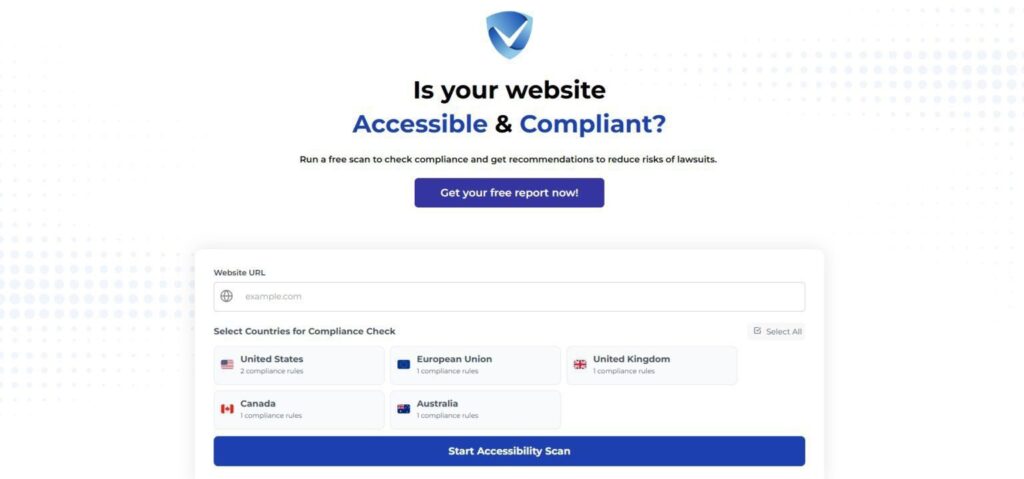
As we have explored throughout this blog post, selecting the appropriate accessibility tool for your website is not merely a technical decision but an essential step towards achieving digital inclusivity. Ensuring that your website is accessible is paramount, not just for compliance with legal standards, but also for fostering a welcoming environment for all users, including those with disabilities. The right accessibility tool can significantly enhance user experience, addressing various needs such as visual impairment, hearing difficulties, and cognitive challenges.
During the selection process, it is crucial to evaluate the features and functionalities offered by different tools, considering factors such as ease of integration, user interface, customizability, and ongoing support. Taking the time to read reviews and compare the effectiveness of various options can lead to more informed decisions that align with your organization’s goals. This deep understanding of features available will empower you to create a more inclusive online space.
For those looking to dive deeper into their options, we encourage you to visit our comparison page, where you can review the strengths and weaknesses of various accessibility tools side by side. Exploring these resources can provide further insight, enabling you to choose the solution that best fits the specific needs of your website and audience.
In light of the importance of web accessibility, taking action to improve your website’s inclusivity is not just beneficial but necessary. By following the steps outlined in this blog post, you are already on your way to making a positive impact. Your commitment to accessibility not only benefits users but also enhances your online reputation and expands your reach. Let us prioritize inclusivity and make the digital world accessible to everyone.



